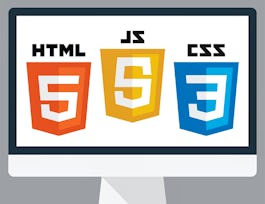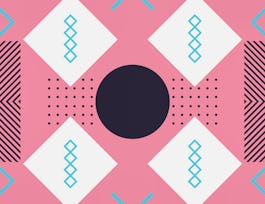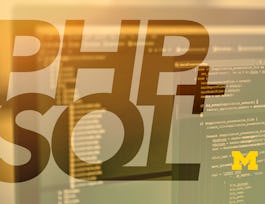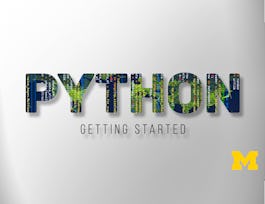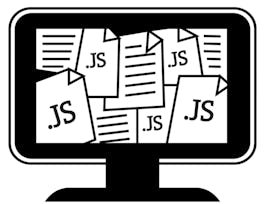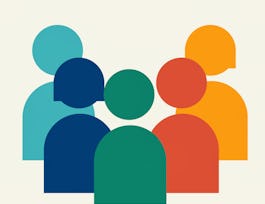Design and Product
and design, product management, and graphic design; subtopics include UX design, web design, human-comp... ...
Earn Your Degree
Product Manager Skills
Most Popular Courses
Top Rated Courses
Data Driven Decision Making
UI/UX Design Principles and Practices
Break Into the Gaming Industry
Launch Your Career
Most Popular Certificates
Finish a Design and Product Course in Under 24 Hours
Recently Launched Guided Projects
Get a Head Start on Your Degree Today
Beginner Design and Product Courses
Frequently Asked Questions about Design and Product
Courses in design and product teach you how to create software products that effectively solve user problems or otherwise provide them value. Product managers start by working with their teams to ideate a vision for a solution to meet these user needs. This requires market research, competitor analysis, and lots of brainstorming to identify one or more product ideas.
Next, product managers work with their design teams to build proof of concepts for these ideas, with a goal of quickly creating a prototype that can be tested and subsequently improved or pivoted away from. These design teams may include a number of distinct roles such as UX (user experience) designers, UI (user interface) designers, and graphic designers, or sometimes simply product designers responsible for a range of these tasks.
A successful product launch from a business perspective requires more than just a great app, of course. As the vision for the product is refined, product managers must also work with product marketing managers and other executives and decision-makers to build the business case, marketing and promotions strategy, and go to market strategy.
Once the business plan for the product is mapped out and agreed to within the organization, product managers work with the design team, software developers, and software engineers to make this vision a reality. That includes managing the product backlog, the daily scrum, sprint planning, and extensive product testing and quality assurance (QA) to ensure that the product design is ready for release.
Digital product design is an applied art, and professionals often have backgrounds in graphic design, drawing, photography, or other visual arts. It’s not about being able to blow away your team with your technical skills. It’s about having a strong, distinctive design voice, a sense of color and typography, and a skill for balancing competing visual elements with text. Above all, designers should have a passion for making software products that solve for user needs effectively and with a clean, intuitive interface.
Professionals who design software need additional skills that separates them from other graphic designers, of course. User experience (UX) design and user interface (UI) design are core product design skills, and can include skills in conducting user research as well as design principles for UX/UI. Familiarity with programming languages like HTML and CSS can also be invaluable in working with the programmers on your team, even if you don’t have to do much coding yourself.
In addition to being familiar with these technical aspects of design and software development, product managers rely heavily on “soft skills.” They are the hub of product development, responsible for communications across the engineering team, the design team, and other stakeholders and executives within the organization. Making sure everyone is on the same page throughout the long and complex process of product development isn’t easy, so great interpersonal communication skills are essential for these roles.
The world of software apps has exploded over the past decade, with not only tech companies but companies in more traditional sectors relying on attractive and useful apps to add new product offerings, expand their market, and deliver value for customers. According to Glassdoor, the average base pay for a product designer is $98,266/year as of November 2019. Specialist roles like UX designer and UI designer pay slightly less on average according to Glassdoor, while higher up product managers make an average of $126,658/year.
You can take a wide range of individual product design courses and short Guided Projects online from top-ranked schools like University of Michigan, University of Minnesota, and Princeton through Coursera. These range from design-oriented courses in design thinking and design principles, web design, and UI/UX research and design to courses focused more on the software development process such as Agile development and product management.
Product design is ultimately also about learning to work with focus groups and design teams to meet the needs of real-life people, so the Coursera platform’s ability to connect you with live video classrooms, office hour sessions, and collaborative meetings with teammates means you don’t have to miss out on those vital parts of your education just because you’re learning online.
The skills and experience you might need to already have before starting to learn design and product would likely involve knowledge of product marketing and graphic design, from a perspective for software development. Design and product are two key aspects that teams manage when they start to plan out and build a software product. There are different steps and approaches in building such a product, involving hardware, software, and even simple prototypes. To learn about design and product, it would benefit you to have skills and prior experience in visual design, UX design, or UI design along with high-quality work standards, and efficient work processes.
The kind of people that are best suited for roles in design and product are software developers, computer science geeks, and product marketing pros who are passionate about creating great software products. For many, this stage of design and product is the most fulfilling, as it combines graphic and visual work, user flow, user experience, software coding, and team management skills These people who are best suited for roles in design and product also know programming languages such as Java, SQL, and Python.
You may know if learning design and product is right for you if you love creating software already to make Web and mobile apps and love working with other developers and product people. If you’re interested in making this a career, working in software design and product is a growing career opportunity. Lastly, if you have creative instincts in art visuals and digital video, you might lean toward knowing that design and product is right for you.
Some topics that are related to design and product may include conceptualization, art design, software architecture, gaming systems, and technical designs for the product. Topics more related to the product side might involve user experience, marketing strategy, and software analysis, depending on the type of product, company, and industry.
Online Design and Product courses offer a convenient and flexible way to enhance your knowledge or learn new Design and Product skills. Choose from a wide range of Design and Product courses offered by top universities and industry leaders tailored to various skill levels.
When looking to enhance your workforce's skills in Design and Product, it's crucial to select a course that aligns with their current abilities and learning objectives. Our Skills Dashboard is an invaluable tool for identifying skill gaps and choosing the most appropriate course for effective upskilling. For a comprehensive understanding of how our courses can benefit your employees, explore the enterprise solutions we offer. Discover more about our tailored programs at Coursera for Business here.
What Coursera Has to Offer
| Learning program | Description |
|---|---|
Guided Project | Learn a job-relevant skill that you can use today in under 2 hours through an interactive experience guided by a subject matter expert. Access everything you need right in your browser and complete your project confidently with step-by-step instructions. |
Project | Learn a new tool or skill in an interactive, hands-on environment. |
Course | Take courses from the world's best instructors and universities. Courses include recorded auto-graded and peer-reviewed assignments, video lectures, and community discussion forums. When you complete a course, you’ll be eligible to receive a shareable electronic Course Certificate for a small fee. |
Specialization | Enroll in a Specialization to master a specific career skill. You’ll complete a series of rigorous courses, tackle hands-on projects, and earn a Specialization Certificate to share with your professional network and potential employers. |
Professional Certificate | Whether you’re looking to start a new career or change your current one, Professional Certificates on Coursera help you become job ready. Learn at your own pace from top companies and universities, apply your new skills to hands-on projects that showcase your expertise to potential employers, and earn a career credential to kickstart your new career. |
MasterTrack® Certificate | With MasterTrack® Certificates, portions of Master’s programs have been split into online modules, so you can earn a high quality university-issued career credential at a breakthrough price in a flexible, interactive format. Benefit from a deeply engaging learning experience with real-world projects and live, expert instruction. If you are accepted to the full Master's program, your MasterTrack coursework counts towards your degree. |
Degree | Transform your resume with a degree from a top university for a breakthrough price. Our modular degree learning experience gives you the ability to study online anytime and earn credit as you complete your course assignments. You'll receive the same credential as students who attend class on campus. Coursera degrees cost much less than comparable on-campus programs. |



















